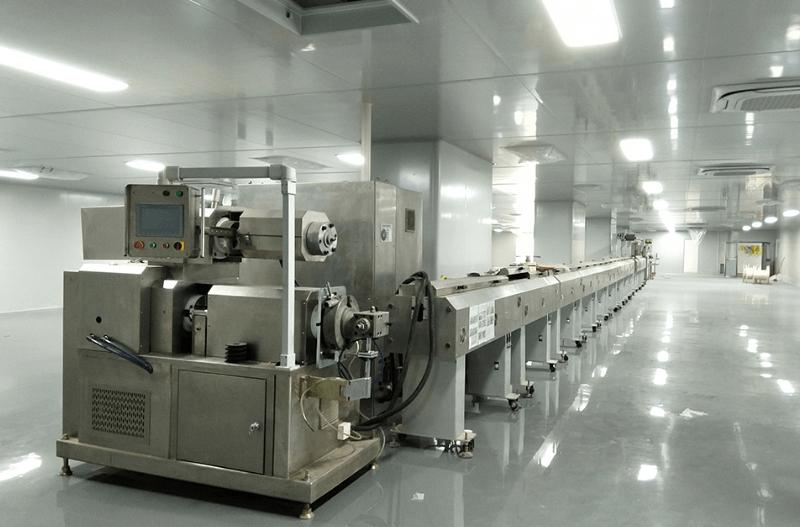
7 Advantages of Using HDPE for Catheter Extrusion
In the field of medical devices, catheters play a crucial role in diagnosing and treating various conditions. Among the wide range of catheter materials available, high-density polyethylene (HDPE) has emerged as a reliable and versatile option. In this post, the author would discuss the HDPE material.
What is HDPE?
HDPE, an abbreviation of High-Density Polyethylene, is a thermoplastic polymer widely used in various applications due to its high strength, durability, and chemical resistance. HDPE is known for its toughness, stiffness, and excellent impact resistance, making it suitable for products such as bottles, pipes, containers, toys, and even medical devices like catheters. It is also popular in the packaging industry for its ability to resist moisture and chemicals. HDPE is recyclable and considered a safe material for food and beverage packaging.
What is A HDPE Catheter Extruder?
A catheter extruder is a machine specifically designed for the manufacturing of medical catheters. Then, the HDPE catheter extruder is engineered to manufacture HDPE tubes, which consist of screw-driven barrel system.
The process begins by feeding HDPE pellets or resin into the barrel, where they are melted and homogenized by the rotation of the screw. The molten HDPE material is then forced through a specially designed die, which gives the catheter tube its desired shape and dimensions. The extruded tube is then cooled and cut to the required length.
Catheter extruders typically have temperature control systems to precisely regulate the temperature along the barrel, ensuring the material is properly melted and cooled. They may also incorporate features like cooling tanks and marking systems to enhance the efficiency and quality of the extrusion process.
The process begins by feeding HDPE pellets or resin into the barrel, where they are melted and homogenized by the rotation of the screw. The molten HDPE material is then forced through a specially designed die, which gives the catheter tube its desired shape and dimensions. The extruded tube is then cooled and cut to the required length.
Catheter extruders typically have temperature control systems to precisely regulate the temperature along the barrel, ensuring the material is properly melted and cooled. They may also incorporate features like cooling tanks and marking systems to enhance the efficiency and quality of the extrusion process.
Is HDPE A Medical Grade?
Yes, it is. The HDPE can be used as a medical material to meet the stringent requirements and standards set for medical applications. After additional processing and testing, the HDPE catheter could meet the necessary biocompatibility, purity, and safety criteria.
What Are The Advantages of Using HDPE for Catheter Extrusion?
Using HDPE (High-Density Polyethylene) for catheter extrusion offers several advantages:
●Chemical resistance
HDPE is highly resistant to a wide range of chemicals, making it suitable for use in medical applications where contact with various fluids and substances is expected.
●Flexibility
HDPE catheters can be manufactured with different levels of flexibility, allowing for customization based on the specific medical procedure or application. The material can be adjusted to provide the desired balance of rigidity and flexibility.
●Low friction
HDPE has a smooth surface, which results in low friction when in contact with tissues or fluids. This reduces the risk of trauma or discomfort during insertion or movement of the catheter.
●Biocompatibility
HDPE is biocompatible and considered safe for use in medical devices. It does not cause adverse reactions or toxicity when in contact with bodily tissues or fluids.
●Resistance to kinking or collapsing
HDPE catheters exhibit good resistance to kinking or collapsing, ensuring that the catheter maintains its integrity and functionality during use.
●Sterilization Compatibility
HDPE catheters can withstand common sterilization methods such as ethylene oxide (ETO) gas, gamma irradiation, and autoclaving, without significant degradation or loss of properties.
●Recyclability
HDPE is recyclable, making it an environmentally friendly choice. Recycled HDPE can be used in the production of new products, reducing waste and promoting sustainability.
Are HDPE Catheter Extruders Customizable?
Yes, HDPE catheter extruders can be customizable to a certain extent. Several options in HDPE catheter extruders are availabe.
●Extrusion diameter
The extruder can be tailored to accommodate different diameters of catheter tubes, allowing for the production of various sizes.
●Wall thickness
The extruder can be adjusted to control the thickness of the catheter tube walls, accommodating different requirements for flexibility, strength, or specific medical procedures.
●Multi-lumen configurations
Some extruders can be designed to produce catheter tubes with multiple lumens or channels, allowing for the integration of functionalities such as fluid delivery or simultaneous access points.
●Additional features
Depending on the manufacturer and specific requirements, HDPE catheter extruders can be equipped with additional features like cooling tanks, vacuum sizing, marking systems for length or identification, and precision control systems for temperature and extrusion speed.
Conclusion
The HDPE catheter, fabricated through the extrusion process using high-density polyethylene, has proven to be a valuable solution in the medical field. The HDPE catheter is one of the essential medical tubes in the hospital. As the demand for reliable and efficient catheter solutions continues to rise, HDPE remains a material of choice for medical device manufacturers striving for excellence in patient care.



